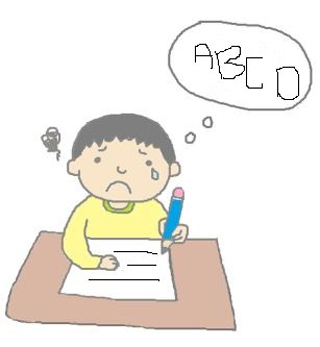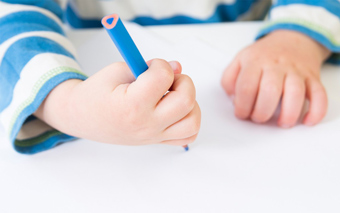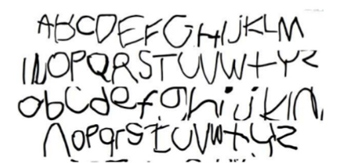Does your child have dysgraphia?
Does your child have dysgraphia?
Children tend to have poor handwriting and spelling during their growing years. Though this is often thought as something that requires more practice, parents and teachers fail  to see this as a type of learning disability. Persistent issues with handwriting can be an indicator of dysgraphia.
to see this as a type of learning disability. Persistent issues with handwriting can be an indicator of dysgraphia.
Dysgraphia is a learning disability that affects handwriting and fine motor skills. It interferes with spelling, word spacing and the general ability to convey thoughts on paper. It slows down the process of writing and makes the written words illegible. This is an issue pertaining to the nervous system that affects the fine motor skills.
Dysgraphia can be identified easily when a child learns to read. In some cases, it can also remain hidden till adulthood. According to scientists, dysgraphia occurs in adults due to brain injury and in kids, it occurs along with other learning disabilities like ADHD and dyslexia.
Symptoms:
Identifying Dysgraphia in children can be quite tricky. Here are some symptoms or indicators in children:
-
 Trouble forming/spacing words
Trouble forming/spacing words
Children with dyslexia often find it difficult to form words and sentences. In some cases, they fail to understand the concept of spacing between words and end up writing the words continuously or adding space where it is not really necessary.
-
Awkward grip on pencil
Children in general tend to have an awkward grip on pencils. This is usually corrected over time. But, children with dysgraphia prefer to hold their pencils in an awkward manner and are not comfortable with being taught how to hold the pencil.
-
Difficulty writing within the margin
Children with dysgraphia find it difficult to stick to the margin or write within one.
-
Trouble with sentence structure/grammar while writing
Difficulty in conveying thoughts or ideas on a paper is another symptom of dysgraphia. In such cases, children find it difficult to express themselves on paper.
-
Difference between spoken and written understanding of a topic
Children with dysgraphia are better at communication than at writing. The difference in their understanding of a topic is clearly visible when they are asked to talk.
Types of Dysgraphia:
Dysgraphia can be of numerous types –
-
 Dyslexic dysgraphia
Dyslexic dysgraphia
Children with dyslexic dysgraphia tend to have an illegible handwriting, but their copied work looks fairly better. They also tend to have poor spelling skills.
-
Motor dysgraphia
This occurs due to poor motor skills, low muscle tone, poor dexterity and unspecified clumsiness.
-
Spatial dysgraphia
This occurs when children fail to understand the concept of spacing. Children also tend to struggle while writing on lines or within margins.
-
Phonological dysgraphia
This indicates poor writing and spelling while encountering unfamiliar or irregular words.
How to make the classroom learner-friendly?
Dysgraphia is best diagnosed by a neuropsychologist, but can be identified by a psychologist too. Here are some ways to make the classroom learner-friendly:
-
 Allow students to type
Allow students to type
Teachers can make the classroom learner-friendly by allowing the students to carry their laptops in which they can type the notes. This would be effective for the higher classes.
-
Oral presentations instead of homework
Teachers can introduce presentations instead of written homework. This can be effective even for students belonging to the primary classes.
-
Provide an extension of time to submit homework/assignments
Students with dysgraphia tend to be slow and hence, teachers can provide ample time for the students to turn in their assignment/homework.
-
Note taking
Students should be encouraged to take notes in the class. Teachers themselves can prepare handouts for the students to learn from.
-
Pairing students
Students learn better when they are paired with a peer. Students with dysgraphia can either be paired with a peer or can be assigned a teacher as a mentor to help them with their homework and studies.
In a nutshell, teachers can help students overcome dysgraphia with sufficient attention and care.





















